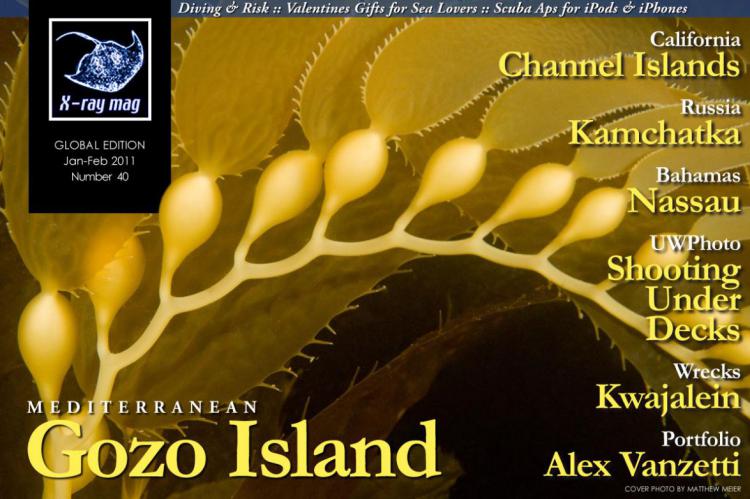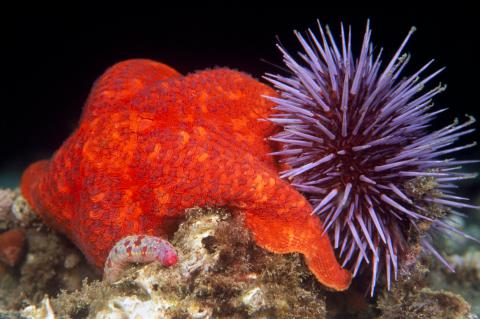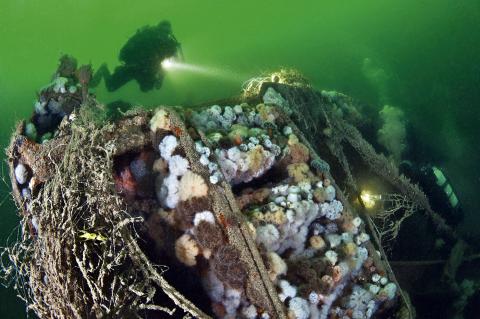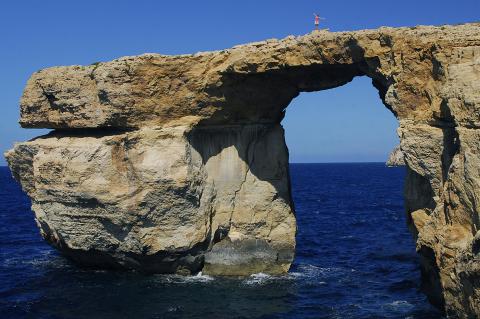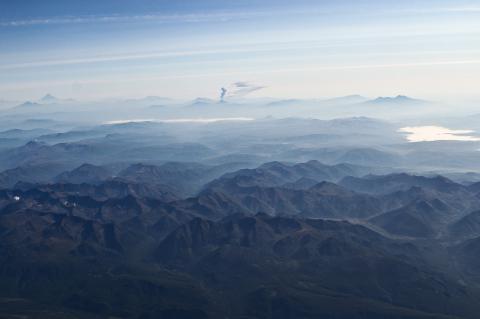X-Ray Mag #40
Malta’s Gozo Island (Mediterranean) by Scott Bennett | Wrecks on Kwajalein atoll | Valentines Gifts for Sea Lovers edited by Gunild Symes & Catherine GS Lim | Kamchatka, Russia by Andrea Bizyukin, PhD | Dive Medicine: Diving & Risk by Dr Carl Edmonds | Ghostfishing The Netherlands by Peter Verhoog | Portfolio: Alex Vanzetti by Gunild Symes | Nassau, Bahamas: Hollywood Underwater by Millis Keegan | The Apps Are Coming by Peter Symes | Channel Islands, California by Matthew Meier | UW Photo: Shooting Below Decks by Joseph Dovala
Main features in this issue include:
Channel Islands - The Realm of the Giant Kelp
For those of us fortunate enough to call Southern California home, the Channel Islands offer world-class diving in our own backyard. Comprised of eight islands stretching over 160 miles of Pacific Ocean, the Channel Islands boast over 2,000 terrestrial plants and animals, including 150 endemic species, rivaling the Galapagos for diversity.
My first underwater photos were taken at the Channel Islands, and I have returned every year since. On my most recent trip, the liveaboard spent two days anchored at one dive site, in which time, none of the 20 photographers and videographers onboard ran out of subjects to shoot.
Ghostfishing
It is the nightmare of every diver who dives the Dutch North Sea—getting entangled in a fishing line of old net, unable to free yourself. The Dutch wrecks are becoming an ever popular destination for both the fishing and diving industry. A threat to both, fishing boats and anglers can lose their nets and lines on wrecks, and divers can lose their lives.
Diving the North Sea is always an adventure. Even though the weather can be unpredictable, more and more divers have started to explore the wreck sites each year. But wreck diving can be dangerous, too. I have dived the wrecks of my North Sea for over a decade now, and I have seen the number of lines, hooks, sinkers and nets explode. On several occasions, my slow swimming exploration over a wreck was suddenly interrupted—something held me back. It could be a line, a line and hook, or a fine-mesh net that was almost invisible.
Gozo Island
“Somehow, I can’t imagine lawnmowers being a high selling item here,” was one of my first thoughts while traversing the Maltese countryside. Dry and stark, the rocky landscape couldn’t be more different than the soft green of Denmark we had left behind a mere four hours earlier.
To be honest, Malta as a holiday destination, let alone a diving one, had never even crossed my mind. However, when X-RAY MAG’s very own Peter and Gunild Symes announced a weeklong dive trip and asked me along, I was immediately intrigued.
Kamchatka — Russia’s Mysterious East
“Is there diving in Kamchatka?” my buddy asked me while inspecting a map of Russia on Google. It was such an unexpected question, it put me in a stupor. As a Russian dive professional, I certainly should know about all the dive sites and dive centers around the country, but I was stumped with this question about Kamchatka.
Each more or less erudite traveler I questioned told to me that Kamchatka is the land of volcanoes. Of the more than 600 volcanoes on the planet, 160 of them are located on the peninsula of Kamchatka, and 30 of them are active.
Shooting Below Decks
Not all sunken ships are the same. There are shallow wrecks, deep wrecks, very old barely discernable wrecks, wrecks sunk in war, wrecks sunk to make artificial reefs, even wrecks placed on the sea bed for Hollywood movies. While each ship has a different history and characteristics they share one thing in common—they all have been transformed into undersea time capsules.
The ship’s design reflects how life at sea existed in a particular era, and personal effects that went down with them signs a personal signature to those that walked and worked the decks.
What are the risks, really?
Experience of life suggests that anything which is fun tends to be either illegal, immoral, fattening or dangerous. Recreational diving partly conforms to this universal law, ranking below hang gliding and parachuting but above most sports in regards to the risk of a fatal accident.


